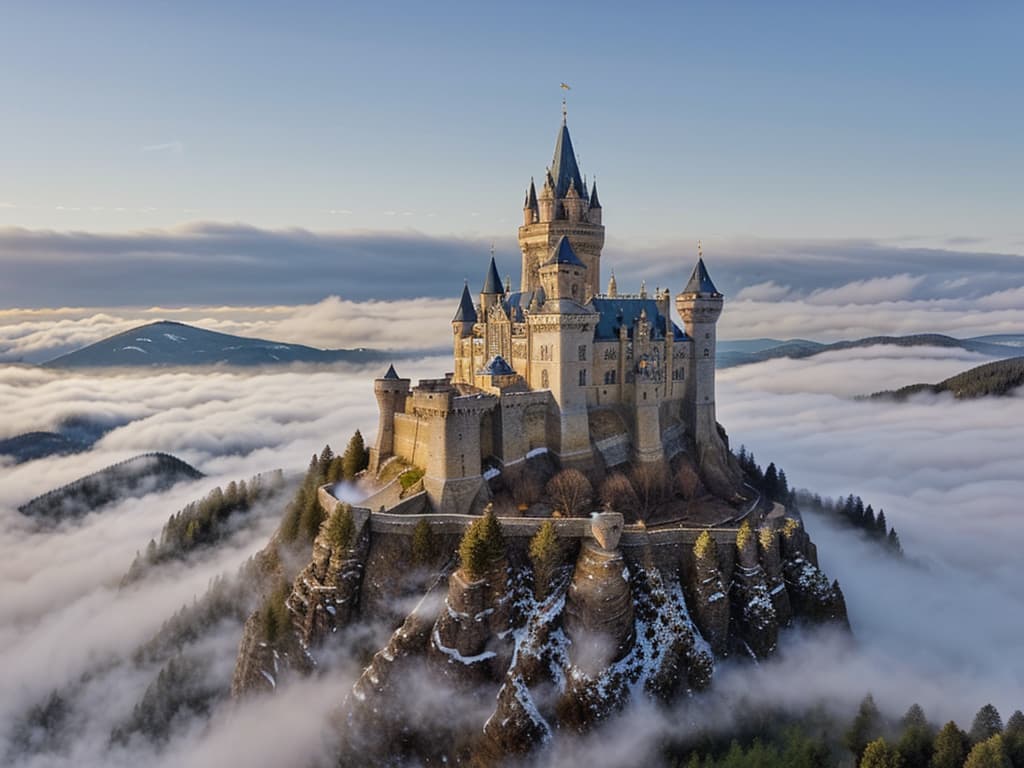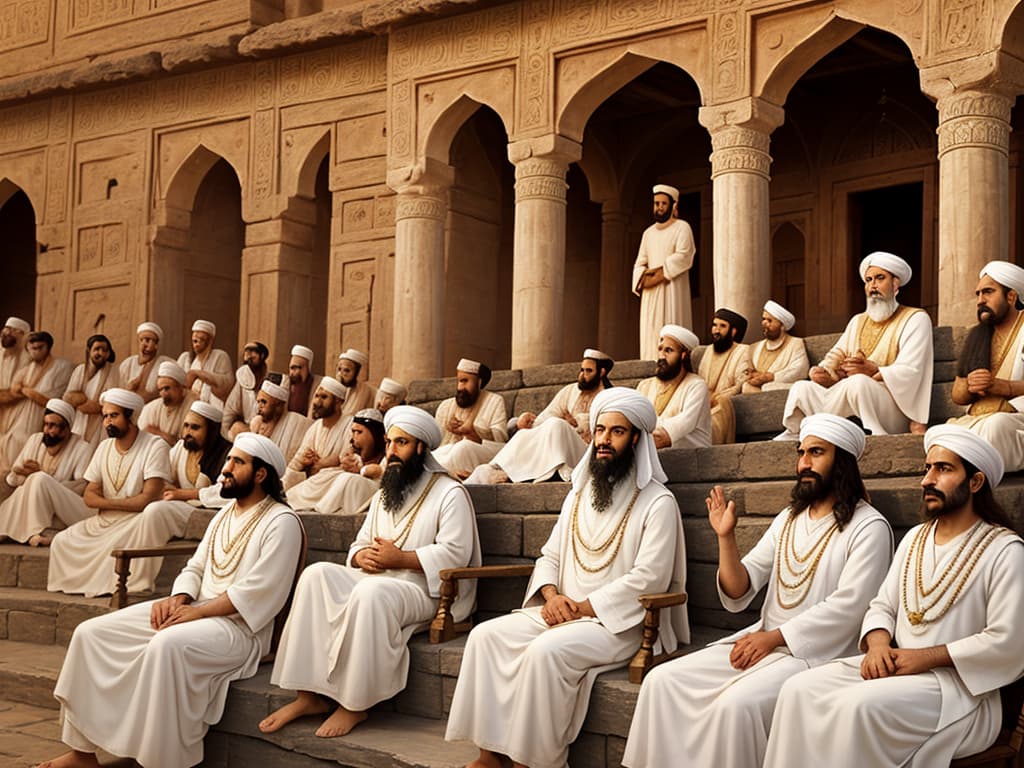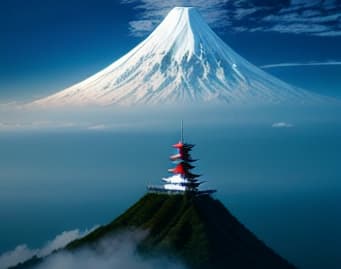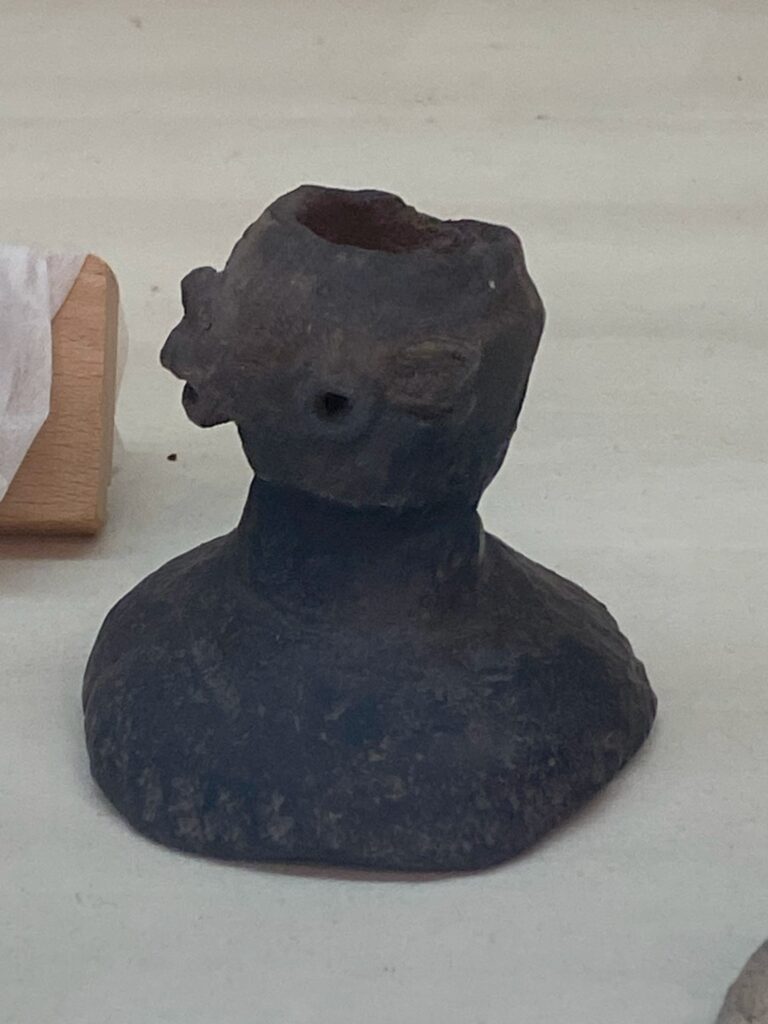The Gods Who Stole the Name of the Creator and the Division of the World
According to OAHSPE, this world has witnessed repeated rebellions of gods. Each time, a great spiritual “pruning” took place—a cleansing of evil to restore balance.
The greatest of these prunings in ancient times was the submergence of the continent of Pan. Yet even after that, not only humans but also the gods themselves grew arrogant and defied the Creator’s will. In response, various high archangels descended to Earth to purify it and deliver revelations for the next spiritual age.

Around 7,000 B.C., the great archangel and Orian chief Fragapatti came to Earth. At that time, one of the gods of Earth, I’hua’Mazda, had been raising a prophet named Zarathustra. From birth, Zarathustra faced many hardships, but under the protection of I’hua’Mazda, he overcame them and eventually compiled the world’s first holy scripture—what would later become the foundation of the Avesta, the sacred book of Zoroastrianism.
Zarathustra’s teachings were built upon three pillars:
- The cosmic laws revealed by the Creator of the higher heavens (nirvana), Ormazd (Jehovih).
- The teachings of I’hua’Mazda, who governed the lower heavens and guided justice and morality on Earth.
- The direct guidance of Zarathustra, the human prophet, on how to live righteously in the corporeal world.
However, several centuries after Zarathustra’s tragic death and ascension to the higher heavens with Fragapatti, his teachings were altered.
The concept of the higher heavens was removed, and it was claimed that Earth was the only world, and that humans living on it were the only people in existence.
The one who made this change was Afra, a god who was once pure of heart.

Seeing humanity falling into darkness, he thought: “If darkness cannot be prevented, then I shall bring the Creator—the source of light—down to Earth itself.”
So he took the name A’hura Mazda, borrowing from I’hua’Mazda, and removed Ormazd, the true Creator, from the scriptures. He then declared himself to be the Creator of the universe and the supreme god of Earth.
This revised doctrine became the foundation of the Avesta as it is known today.
Ahura’s original motive was noble—he wished to prevent the spread of darkness on Earth.
But the result was widespread conflict and war. Because he claimed to be the Creator, he had to suppress those who still worshipped the true Creator.
In the end, the world he created was the opposite of the ideal he had envisioned.
Eventually, A’hura Mazda fell into ruin. Archangel Cpenta-Armij descended to Earth, purified the world again, and a new 3,000-year cycle began.
Afterward, A’hura Mazda descended into hell. Yet in time, he repented and began to walk the path of restoration once again as Ahura.
But at that same time, his former lieutenant, the god Anuhasaj, rose up in rebellion. Just as Afra had once tried to become the Creator of Earth, Anuhasaj now sought to become the supreme ruler of the world.
This marked the beginning of what later came to be known as the Thousand-Year War.
I estimate that this war began around 3,850 B.C.
Anuhasaj took the name De’yus and sent many subordinate gods to different regions. Together, they erased the memory of the true Creator from the world.
De’yus’s system of rule was simple: he declared himself to be the one true Creator and established a doctrine of worship centered around himself.
This doctrine was spread through his loyal subordinate gods to every corner of the world.
But, as is often the case in the order of the universe, De’yus was eventually betrayed by his own lieutenants. He was overthrown and cast into hell.
After his fall, his subordinates in each region declared themselves to be the supreme creator.
This was the state of the world after the Thousand-Year War—a fragmented Earth, with regional myths of creation spreading in place of the original divine truth.
Where Did Japanese Mythology Come From? — The Influence and Origins of a False God
Japan has a long tradition of mythology, much of which is recorded in official historical texts such as the Nihon Shoki (Chronicles of Japan) and the Kojiki (Records of Ancient Matters).
According to the Nihon Shoki, a deity named Kuninotokotachi-no-Mikoto created the islands of Japan. From there, a divine genealogy began. Among these gods, Izanagi and Izanami appear as divine parents, and from them was born Amaterasu-Omikami, the sun goddess. Many other deities descended from Amaterasu, and their descendants were worshipped as the ancestral gods of various clans throughout Japan.
The first emperor of Japan, Emperor Jimmu, is said to be the fifth-generation descendant of Amaterasu.
Now, if we think about it logically, the idea that a single god created only Japan and its islands seems quite far-fetched. So why did such mythology arise in the first place?

I believe the spiritual background lies in an event around 2900 BCE: the self-destruction of the false god De’yus and the resulting independence of many local gods around the world.
One of those gods, I suspect, ruled over the land that is now Japan—and that god may have been none other than Kuninotokotachi-no-Mikoto.
He positioned himself as a creator god and crafted a mythology in which a human king who ruled Japan was born from his spiritual bloodline.
Japan is unique in that the current imperial family still traces its lineage back to this ancient mythological ancestry. This continuity of a royal bloodline is extremely rare on a global scale.
Because of that, even myths that were originally crafted in ancient times have continued to be told and cherished to this day.
Ancient Memories in Tohoku — Traces of the Pan Continent and the Ihin People
As previously mentioned, the mythology in Japan that positions Kuninotokotachi-no-Mikoto as the creator god was established during the aftermath of the “Thousand-Year War” and has been passed down to the present day.
Of course, the idea of a creator god who made only the land of Japan is hard to accept at face value, and it’s clear to most that this mythology is a work of fiction.
However, the fact that such mythology has been passed down for nearly 5,000 years gives it undeniable historical and cultural value, making it a fascinating subject for research.

One especially interesting aspect of this mythology is not the creator god himself, but the reverence given to Amaterasu-Omikami, who is regarded as the ancestral deity of Japan’s imperial family.
In other words, in Japanese tradition, the main focus of worship was not the creator, but the divine ancestor of the royal family.
This is why, historically, Japan has had almost no tradition of worshiping a universal creator god.
That said, there are exceptions.
There is evidence that a belief in the creator god did exist in one particular region of Japan.
One key source is a historical text compiled during the Edo period, titled Tsugaru Soto Sangunshi (The Records of the Three Outer Districts of Tsugaru).
This text was compiled under the direction of the Miharu Domain, which ruled over what is now Miharu Town in Tamura District, Fukushima Prefecture.
The ruling family of Miharu was the Akita clan, originally known as the Ando clan, who once governed present-day Akita Prefecture.
Tracing further back, the Ando clan is said to be descended from the Abe clan, which ruled over the Tohoku region in ancient times.
And the Abe clan, in turn, is believed to have ancestral ties to the Arahito-zoku (Arabaki tribe), a group that had been rooted in the Tohoku area since the Jomon period.
The Arabaki tribe is known for their worship of the deity Arahitogami.
According to the Tsugaru Soto Sangunshi, the Arabaki people were the result of intermingling between two groups: the indigenous Aso tribe and the Tsuboka tribe, who migrated to Japan later.
This blending, however, did not happen peacefully—it was triggered by a major disaster that weakened the Aso tribe.
The text contains a striking passage:
“One hundred thousand years ago, during the age of the ancients, the Aso tribe migrated from Mongolia to the northern part of Japan.
Reference: Tsunokawa Soto Sangunshi: Historical Digest, Volume I (Original: Tsunokawa Soto Sangunshi 1: Ancient Times (Vol. I), edited by the Tsunokawa Nakayama Historical Site Preservation Society, published by Hachiman Shoten)
Then, after the arrival of the Tsuboka tribe, most of the land sank into the sea.”
This passage can be interpreted in two ways: either the arrival of the Tsuboka tribe coincided with a massive land subsidence, or the disaster prompted the migration of the Tsuboka people.
What’s noteworthy is the claim that “most of the land sank into the sea”—a phenomenon far beyond what earthquakes or tsunamis alone could explain.
I believe this may refer to the sinking of the fabled Pan Continent.
This leads me to hypothesize that the Tsuboka tribe were in fact the Ihin people who escaped the collapse of the Pan Continent and migrated to Ista.
Unfortunately, in Japan, the Tsugaru Soto Sangunshi is considered a forgery by mainstream scholars and is rarely treated as a legitimate source.
This may be largely due to the fact that it contains many bitter sentiments and grievances from the Abe clan, who once ruled the Tohoku region.
Even so, it is said that those who compiled the text traveled across Japan during the Edo period, gathering folklore and oral traditions from various regions.
While some stories in the book may seem far-fetched, I believe we should not dismiss them all outright.
Among these tales may lie genuine remnants of ancient oral traditions passed down through generations.
Uncovering and preserving these threads may well be the responsibility of those of us living today.
The account of the Pan Continent’s submergence, along with the story of Noah’s Ark and the Great Flood found in the Book of Genesis, is not found in the Kojiki or the Nihon Shoki, but rather in this very Tsugaru Soto Sangunshi.
This further supports the hypothesis that the Tohoku region was the place where the Ihin people—who had escaped to Ista—came ashore.
Going forward, I hope to explore the records of the Tsugaru Soto Sangunshi, along with the traditions of the Aso and Tsuboka tribes, and the legends of the Arabaki people.
Through these investigations, I aim to trace the footsteps of the Ihin and weave together their forgotten story.
References、Images Used
| Books | Authors | Publishers |
|---|---|---|
| OAHSPE ”A New Bible in the Worlds of Jehofih and His angel embassadors.” | John B. Newbrough | OAHSPE PUBLISHING ASSOCIATION |
| 聖書 新共同訳-旧約聖書 | 共同訳聖書実行委員会 | 三省堂印刷/日本聖書協会 |
| 東日流外三郡誌 1古代篇(上) | 東日流中山史跡保存会 | 八幡書店 |
Images:Generated from stable diffusion(model:XSMerge-RealisticVisionV3-ForArchi)
Photo Credit: Clay figurine excavated from the Kamegaoka Site, housed in the Tsuruga City Mokuzo Kamegaoka Archaeological Materials Room



コメント